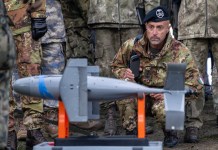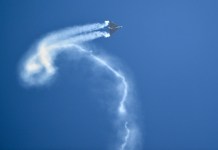To mark the 35th anniversary of the Chernobyl nuclear disaster, Ukraine International Airlines (UAI) is accepting applications from travelers who wish to experience what is referred to as ‘dark tourism’.
On April 26, 1986, Chernobyl’s Reactor No. 4 exploded, triggering the world’s worst nuclear disaster to date. While radioactive debris of fuel and reactor components rained over the area, toxic fumes and dust were carried on the wind around Europe.
The unique ‘Flight over Kyiv and Chernobyl’, scheduled for April 25, will offer the chance to witness the site from the most “unusual angle” at the minimum permissible height of 900 meters, according to UIA.
Dark tourism refers to the concept of visiting places where the darkest events of human history have occurred. A city with abandoned buildings and its grim past can be quite intriguing for a lot of people.
Looking at the rising number of visitors who apply to obtain the obligatory permit to visit the area, the Ukraine government has decided to turn the radiation-contaminated city into an “experience” for those who wish to seek it.

The passengers will get a chance to fly on the Embraer 195 and will get assistance in deepening their knowledge of the nuclear accident. The Chernobyl Tour Company, a Ukrainian firm, will be the professional guide to UAI.
Passengers will also get the chance to visit the Boeing 777 on the apron of the Boryspil Airport and will be permitted to take a photo in the cockpit and a selfie with the pilot. The tourists will be flying with the UIA pilots while the latter will narrate their aviation stories.
For about $106 (2,970 Ukraine hryvnia), the participants will board the jet which will take off from Kyiv’s Boryspil Airport and then fly north to the disaster site Chernobyl giving them an aerial view of the Exclusion Zone around the power plant.

The Worst Nuclear Disaster
The catastrophic event of the nuclear accident in Pripyat, Ukraine, occurred on April 26, 1986, at the Chernobyl Nuclear Power Plant. It contained four Soviet-made RBMK-1000 nuclear reactors built between 1977 and 1983.
Reactor number 4 was a second-generation reactor, built in 1983. The incident was the result of a flawed reactor design that led to steam explosion and fires which released at least 5% of the radioactive reactor core into the environment, with the deposition of radioactive materials in many parts of Europe.
Considered the worst nuclear power disaster to date, the accident left many areas of Ukraine highly radioactive. The Soviet Government faced heavy criticism for the severity of the disaster.
In the Chernobyl disaster, 31 people were believed to have been killed immediately, while the UN estimated that only 50 deaths can be directly linked to the accident.




